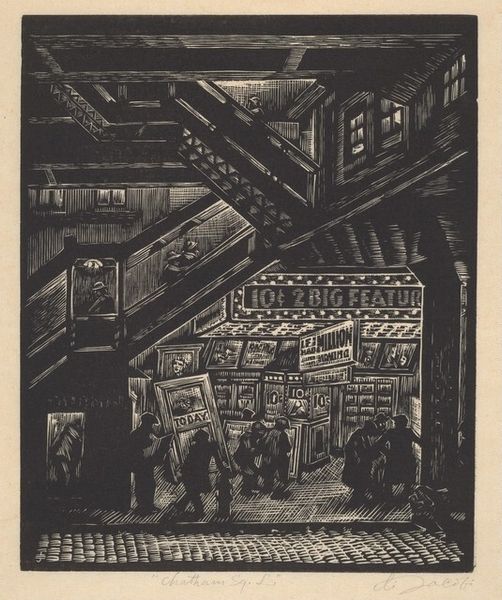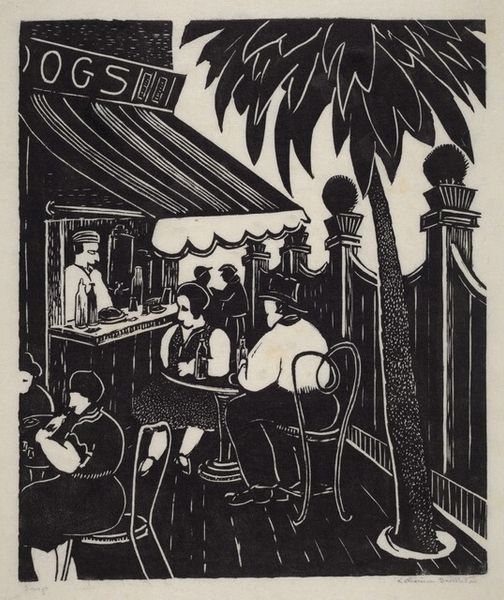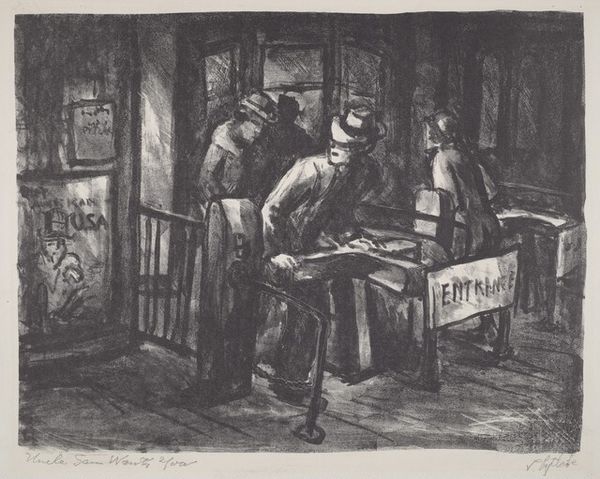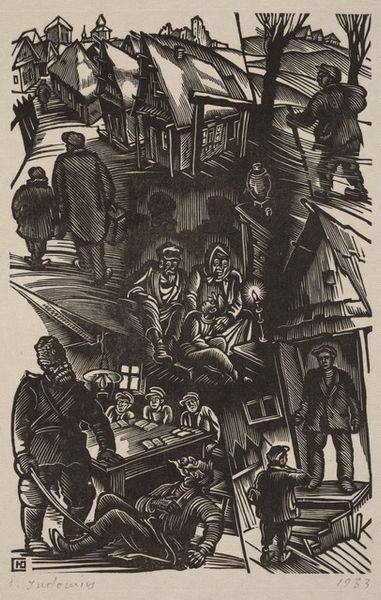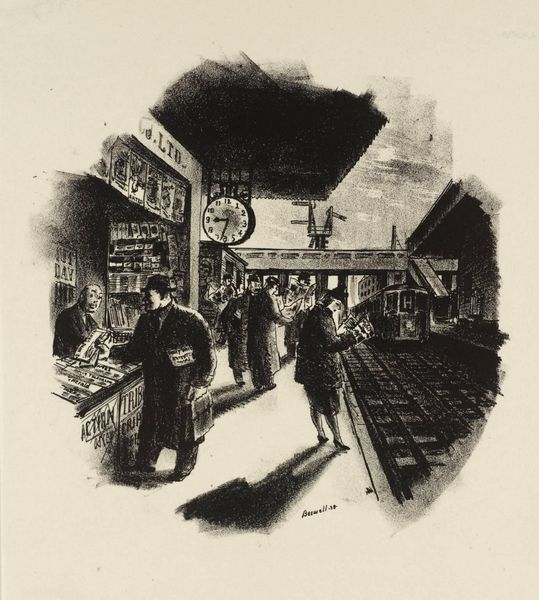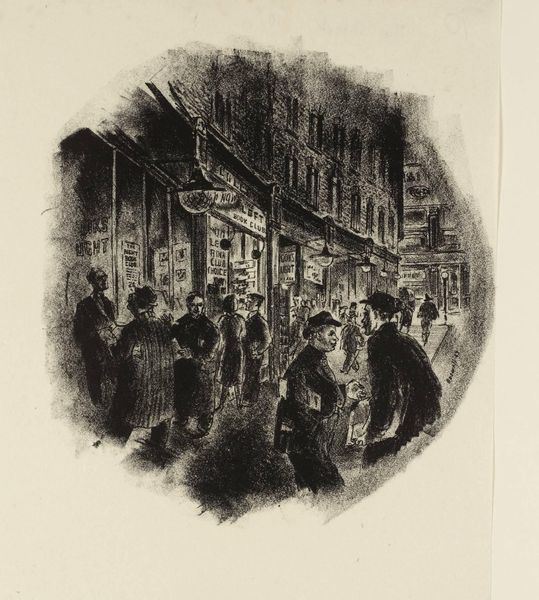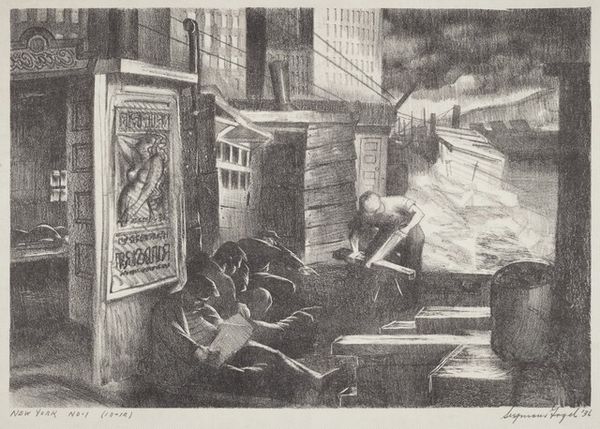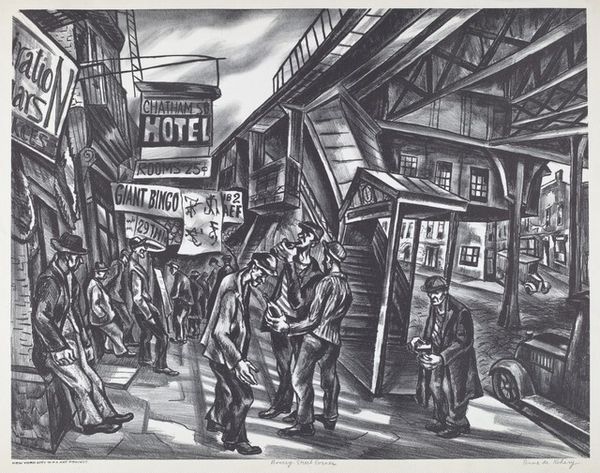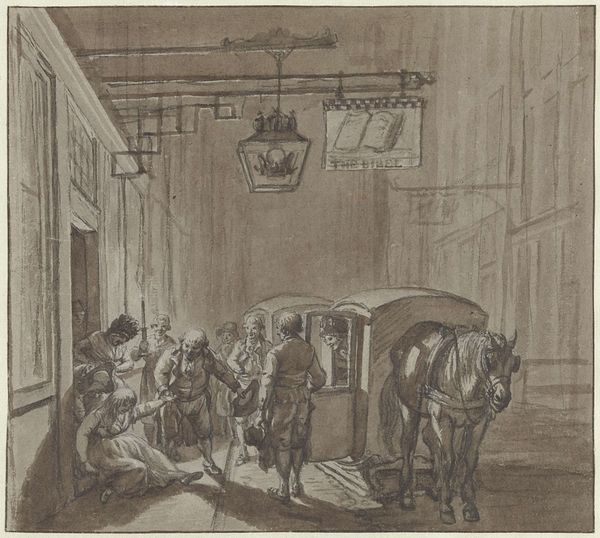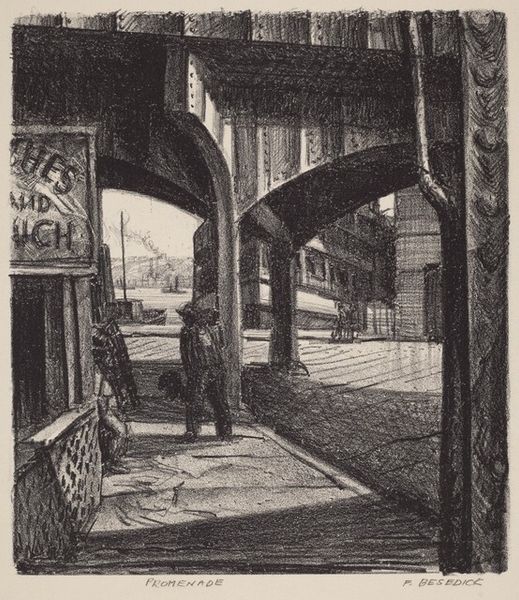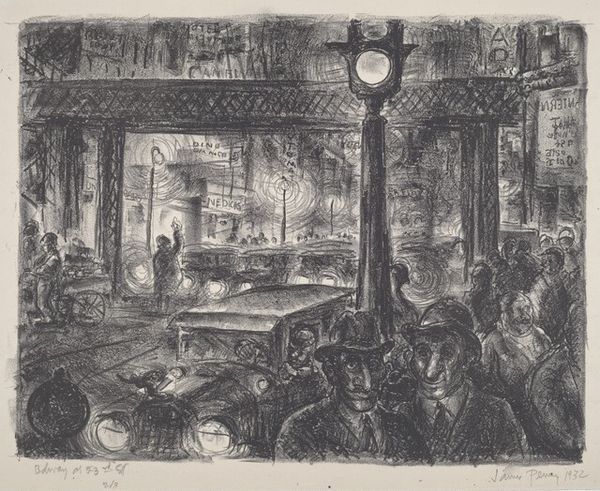
drawing, print, woodcut
#
drawing
# print
#
caricature
#
figuration
#
woodcut
#
cityscape
#
realism
Dimensions: image: 252 x 198 mm sheet: 397 x 308 mm
Copyright: National Gallery of Art: CC0 1.0
Editor: This woodcut from 1937, titled "Chatham Square" by Eli Jacobi, it has such stark contrasts between the light and dark areas, which gives it an almost noir-like feeling. It depicts a crowded cityscape... What do you see in this piece, looking at it with your expertise? Curator: I see a powerful statement about urban life during the Depression era. Jacobi's choice of woodcut, with its inherently graphic nature, amplifies the social realism present. Note the signage: “Hotel for Men Only,” “Progress Hotel”… What narratives are suggested when the architecture of urban life, in particular the hotels, becomes sex-segregated or, perhaps, coded by race or class? Editor: That's fascinating. I hadn’t thought about it that way. The “for men only” sign, coupled with the depiction of the crowds of working-class individuals, certainly speaks to the economic and social inequalities of the time. Curator: Exactly. Consider also the architectural forms pressing in, bearing down from above and constricting movement on the ground. Does the artist want to emphasize how the forces of capital and commerce shape the lives of the working class? Think about how he renders the faces – almost caricature-like, yet hinting at a weariness, a resilience, and an everyday perseverance. The woodcut medium itself becomes a political tool to amplify and give voice to marginalized figures. Editor: That makes so much sense! Seeing how the medium and subject matter connect to create a larger commentary on the socio-economic issues of the time. It makes me want to investigate more woodcuts of that era. Curator: Precisely! Remember, art is always embedded in the political and social contexts in which it's created. Approaching artworks from an intersectional perspective can unlock rich and important meanings.
Comments
No comments
Be the first to comment and join the conversation on the ultimate creative platform.
